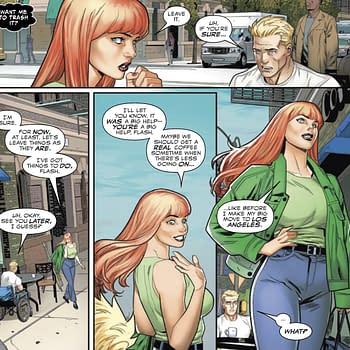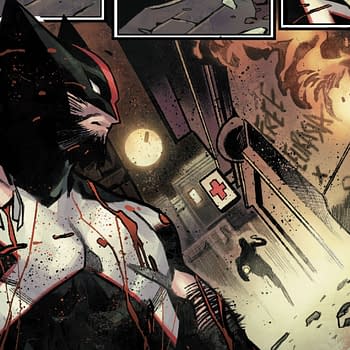Posted in: Comics, Recent Updates | Tagged: Comics, dc comics, entertainment, grant morrison, Map of the Multiverse, multiversity
3 Ways Readers And Creators Can Reap Benefits From DC's Multiverse Map
By Hilton Collins
DC Comics released the Multiverse Map this past summer, which depicts how things like all those multiple Earths relate to Apokolips, New Genesis, Hell, Heaven, the Source, the Speed Force, and other areas and essences that are essential to the DC Universe. It's a key to understanding the publisher's storylines, including Grant Morrison's Multiversity series that's out right now.
It's a long-overdue tool that demystifies DC and the New 52 for loyal readers, and especially new ones, and one that DC can reap benefits from for years to come if they work it right. Here are three reasons why the map is a good idea, and how DC can use it for their own benefit—and their readers' benefit.

2. It gives DC a way to connect their creative properties across media. This is a reach, but DC and parent company Warner Bros. could totally go this route if they wanted, and fans would love them for it. They could say, in a metatextual and metaphysical way, that EVERYTHING they have out, whether it's a TV show, a movie, a video game, a half-hour cartoon, or a feature-length animated film, just takes place on a different Earth. The Arrow and Flash TV shows? Maybe they're on Earth 45. The Young Justice cartoon? Earth 37! Injustice: Gods Among Us? Earth 25! And so on… These possibilities may have already been suggested or hinted at by some DC architect or staff member somewhere along the way over the years, but still… it would be cool if DC made this official, and fans would probably love it.
3. It's a springboard for creators to plan future stories. Now that the map is here, it can be great launching pad for other storylines going forward. You just know that some writer or editor somewhere is looking at this thing, saying, "Oooh! You know what? Maybe there are like, negative Earths out there, like Earth -1! And dude! Maybe it's populated by like, ghosts or shadow creatures or something! Oh! And you know what's beyond the Source…? Another multiverse with 52 more Earths! HOT DAMN!" Even now, someone's probably thinking about what's going to happen after Multiversity, Blood Moon, or the next Crisis ends. The multiverse map is basically a roadmap for the company's creative powers to look at, ruminate over, and think about what their next big event's going to be.
In short, the multiverse map is basically awesome, but it remains to be seen just how awesome it will be in the long-term. It's viability and importance will hinge primarily on what it's used for. Not only is it a tool for readers to understand the stories, it's also a resource for writers, artists, and editors going forward—if they take advantage of it.
Writer and videographer Hilton Collins loves sci-fi and fantasy wherever he finds it, whether it's in comic books, movies, books, short stories, TV shows, or video games. On the video side, he studies filmmaking, motion graphics, and animation; and on the writing side, he covers what he loves for Bleeding Cool and on his own blog, Imagination Unplugged (www.imaginationunplugged.com), a website about entertainment and self-help for creative professionals. He is @HiltonCollins on Twitter.















